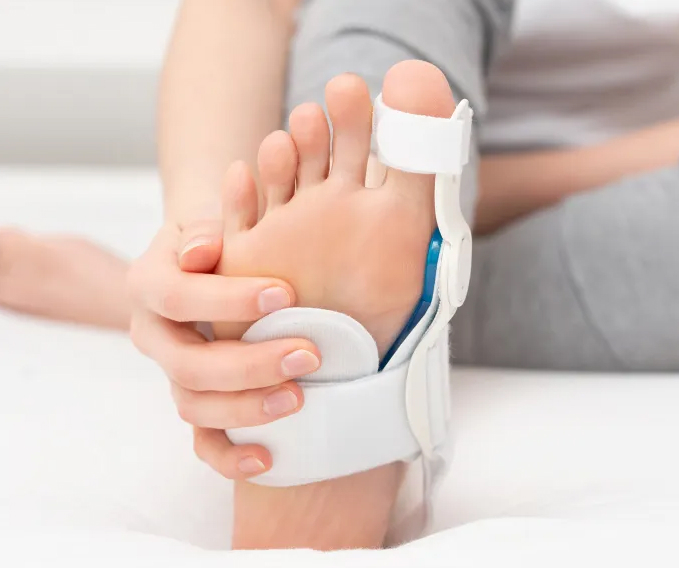Bunion Treatment

As the severity of bunions varies between individuals, the line of treatment will vary too - which can range from conservative methods to surgical treatments.
- Relieve bunion pain and discomfort
- Correct misalignment and deformity issues
- Restore mobility of the foot
Changing to comfortable footwear with wide or open toe box can help in reducing the pressure on toes.
The use of protective pads, custom-made shoe inserts, toe spacers and splints can help provide pain relief and prevent friction between toe joints.
Nonsteroidal anti-inflammatory drugs and pain relief medications may be prescribed to relieve bunion pain and reduce swelling.

Bunion surgery is tailored to the severity of the deformity, the patient's lifestyle, and overall health. There are two primary techniques used today: Open Traditional Surgery and Minimally Invasive (Keyhole) Surgery.
Fellowship-trained in London, Dr Kevin Koo has been performing minimally invasive bunion surgery in Singapore for over a decade and is one of the pioneers of the technique locally.
This time-tested approach involves making a larger incision over the side of the big toe to fully expose the joint and surrounding structures.
The surgeon then realigns the bone, corrects soft tissue imbalances, and, if needed, secures the corrected position with screws or plates.
- Allows direct visualisation of the joint and bones
- Suitable for moderate to severe bunions or complex deformities
- Often includes procedures such as osteotomies (bone cuts), joint realignment, and removal of bony prominence
- Typically requires a longer recovery time and may result in more post-operative swelling or scarring
Minimally invasive or “keyhole” bunion surgery uses very small incisions and specialised instruments to correct the deformity.
The surgeon works with real-time X-ray guidance to make precise adjustments without fully exposing the joint.
- Smaller incisions mean less soft tissue damage, minimal scarring, and quicker recovery
- Reduced post-operative pain and swelling
- Often performed as a day surgery procedure
- Most suitable for mild to moderate bunions
- More technically demanding and requires specialised training and equipment
While traditional bunion surgery is a good and reliable treatment, it is also associated with more post-operative pain and longer wound healing.
With minimally invasive bunion surgery, the patient is normally admitted for just one night and they can walk immediately after the surgery.
 Dr Kevin Koo Oon Thien
Dr Kevin Koo Oon ThienWith a special focus in foot and ankle surgery, Dr Kevin Koo is a consultant orthopaedic surgeon with over 20 years of experience specialising in bunion treatment, in particular, minimally invasive bunion surgery and complex deformity correction.
He was formerly the Director of Foot and Ankle Service and Consultant Orthopaedic Surgeon of the Department of Orthopaedic Surgery at Singapore General Hospital, and has presented extensively at numerous orthopaedic conferences, including the prestigious American Academy of Orthopaedic Surgeons (AAOS).
Dr Koo completed his fellowship in United Kingdom where he worked closely with internationally recognised surgeons to treat elite athletes and professional dancers.
The Bone & Joint Centre is committed to deliver effective and personalised bunion treatment, so you can walk with confidence and ease again.
For appointment or further assistance, contact us at 98987781 or fill in the enquiry form below and we will be in touch with you soonest possible.
| Mon - FriMonday - Friday | : | 8:30am to 5:30pm |
| Sat, Sun and PHSaturday, Sunday & PH | : | Closed |
| Tel | : +65 6970 5905 |
| Fax | : +65 6970 5906 |
| Mobile | : +65 9898 7781 |
| : hello@bjc.sg, drkevinkoo@bjc.sg |





